Facebook Lookalike Audiences are an excellent way to reach people who are similar to your existing customers and followers.
When creating a Facebook Lookalike Audience, you can choose between a range of 1%-10% of the total population in your chosen target country, with 1% being those who most closely match your source.
We bet you’ve been wondering which percentage is the optimal option.
Should you select 1% to target only the most potential buyers or expand your Lookalike Audience further to 5% or more?
We set out to find the answer.
In this month’s experiment, we tested three Facebook Lookalike Audiences to see whether targeting 1%, 5% or 10% of people work best.
The results almost matched our hypothesis that “the bigger, NOT the better.” To find out more, read the full article.
Hypothesis and Experiment Set Up
Our hypothesis was that the smaller the Lookalike audience, the better the results.
Here’s why:
To begin with, Facebook’s algorithms are super smart, and we believed that they could detect the most potential target audience based on existing data.
As we created a Lookalike Audience out of 1% of the country’s population, we thought Facebook would concentrate all the best prospects in this audience.
Consequently, in OHO a 10% Lookalike audience would include more people that aren’t interested in our offer.
We decided to run an experiment with our own lead generation ad campaign featuring the Facebook Ads Bundle – a collection of our all-time top eBooks.
Campaign Set Up
We conducted a 14-day Facebook ad A/B test to find out which Lookalike Audience has the lowest cost-per-conversion and cost-per-click.
To ensure the correctness of our A/B test results, we kept all the other ad campaign elements the same, except the ad set audiences which we wanted to test. We also tested Mobile vs. Desktop ad placement.
Here’s how our ads looked like:
As you might have noticed, all our ads were lead ads (hence the “Download” call-to-action button).
As a person clicked on the ad, a download box popped up where people needed to enter their email and name. For most Facebook users, these forms are pre-filled, and all that needs to be done is to hit the “Submit” button.
After someone had entered their credentials and clicked “Submit,” the download of our Facebook Ads eBook bundle began.
By the way… In case you’re wondering whether Facebook Lead Ads work, we also did an experiment to test this hypothesis. We found out that Lead Ads performed just as well as ads with a landing page. Read about the experiment here: Landing Pages vs. Lead Ads: The $2,000 Facebook Experiment
To set up the campaign, we used the best Facebook A/B testing tool – AdEspresso. We recently made audience testing even easier, so do check it out!
For ease of testing, you can create one campaign and split test the audiences against each other. We went over the top and did three different campaigns with a unique lead form in each – which was a waste of time and a mistake on our end! The results will be identical either way, so we highly advise you keep it simple with AdEspresso and split test your lookalike audiences within the same campaign.
Ad Placement
As we’ve seen the best results while advertising on Mobile and Desktop News Feed, these are the placements we chose.
We were also curious to see whether Desktop or Mobile Facebook Lead Ads work best, so we decided to also A/B test the ad placement.
Experiment Budget
The daily budget for each ad campaign was $35. As all the campaigns were active for 14 days, the total experiment budget was around $1,500.
Bidding
We used Facebook’s automatic bidding options and optimized our ads for lead generation, which means we paid per impressions.
As we mentioned earlier, it’s best not to experiment with too many campaign elements at once. Otherwise, you might have the same problem as marketing pioneer John Wanamaker who said:
“Half the money I spend on advertising is wasted; the trouble is I don’t know which half.”
Tested Audiences
Our advertising goal was to get new leads that were similar to our existing customers.
So, we created Facebook Lookalike Audiences based on a Custom Audience of past converters.
All our Lookalike Audiences were targeted to the USA, meaning that even the audience targeting 1% of the country’s population included 2.1 million people.
Our first Lookalike Audience targeted 1% of US population that most resembled our existing customers.

The third Lookalike Audience we tested targeted 10% of people in the US most closely matching our client base.
As we wanted to ensure that our current customers, trial users, and people who already had downloaded the eBook won’t see our ads, we excluded them as Custom Audiences.
Which of these three audiences delivered the largest number of new leads at the lowest cost-per-conversion?
During the 14 days of campaign runway, we were anxious to learn if our initial hypothesis was right. And I bet you are too. It’s time to reveal our findings!
Experiment Results
It was hard to tell the results before the end of campaigns because, as you can see, the campaign results were kind of “jumpy.”
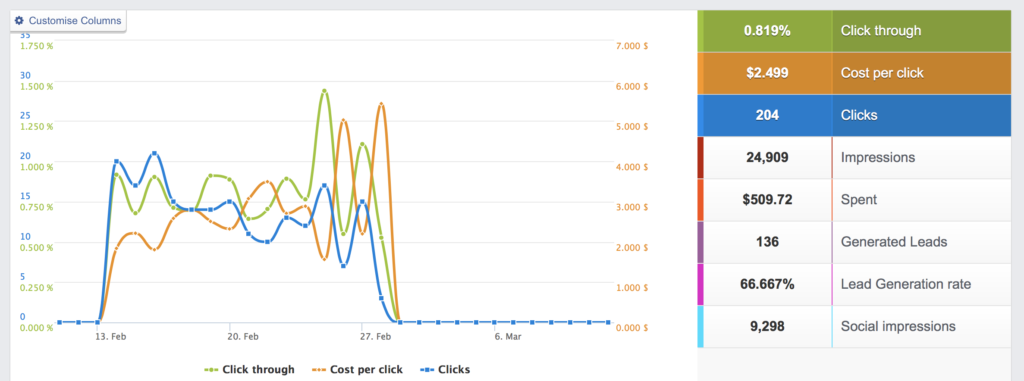
After analyzing each campaign’s results, here’s what we found:
- The 1% Lookalike Audience had the cost-per-lead of $3.748
- The 5% Lookalike Audience had the cost-per-lead of $4.162
- The 10% Lookalike Audience had the cost-per-lead of $6.364
The 10% Lookalike Audience had a 70% higher cost-per-conversion than the 1% Lookalike Audience.
As you look at the campaign comparison, there are even more fascinating insights waiting to be uncovered.
For example, the 10% Lookalike Audience had a significantly lower CTR than other tested audiences. While the 1% and the 5% Lookalike Audiences had a CTR of 0.82%, the 10% Lookalike Audience delivered a CTR of 0.66%. The Lookalike 1% audience delivered 115 leads and the others less. If you compare the cost-per-lead across all the three ad sets and the fact that each of them had a $500 budget, this was to be expected.
Due to a higher cost-per-click, the 10% Lookalike Audience also delivered nearly 40% fewer clicks than the 1% Lookalike Audience.
Wrapping it up: the 1% Lookalike Audience outperformed both the 5% and the 10% Lookalike Audiences. That’s what we thought when setting up the campaigns, but now we knew for sure.
Key Takeaway: It makes sense to create smaller Facebook Lookalike Audiences as they deliver higher campaign ROI (at least in the short term).
Mobile vs. Desktop Lead Ads
Make a guess: Were people more likely to click on our Lead ads and download our eBooks on Mobile or Desktop?
The correct answer is -Mobile.
Across all three lead generation campaigns, Mobile outperformed the Desktop ad placement by more than 45%.
If you look at the campaign timeline of one of the test variations, you’ll see that Mobile was constantly performing at a higher rate.
Campaign Performance in Time
Here’s another takeaway from our experiment: the campaigns performed at the same rate throughout the 14-day period.
As you can see from the chart below, the cost-per-lead remained at the same level for all 14 days.
What’s interesting, is that the click-through rate started to improve as the ads were delivered to more people.
This is an excellent example of how Facebook’s algorithms learn from your ad delivery and your results, and start to eventually deliver the ads to people most likely to click and convert.
Conclusion
When creating Facebook Lookalike Audiences, it’s best to keep them small rather than target 10% of a country’s population.
This actually makes a lot of sense, since Facebook creates Lookalike Audiences based on people’s similarity to your Custom Audience.
Another thing we learned is that when targeting relatively large audiences, your Facebook campaigns perform well even after a 14-day runway. However, it’s best to keep some auto-optimization rules and alerts turned on, just in case of a drop in performance.
If your goal is to target the most potential lead prospects, you should create Lookalike Audiences targeting 1%-2% of a country’s population, instead of aiming for 10%.
And -for best results, don’t forget to exclude Custom Audiences of people who have already converted!
Unsure where to start? Read our guide to Facebook Custom Audiences
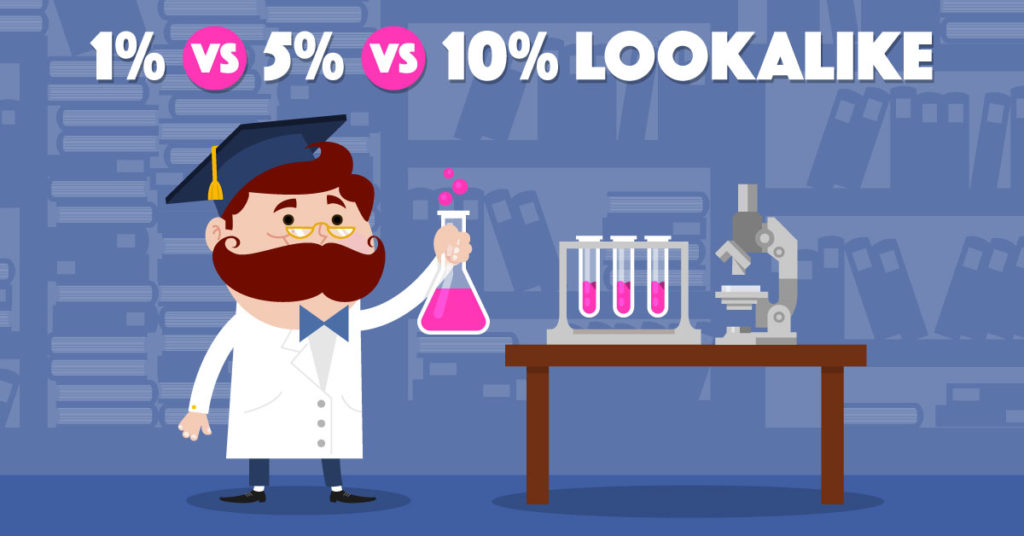

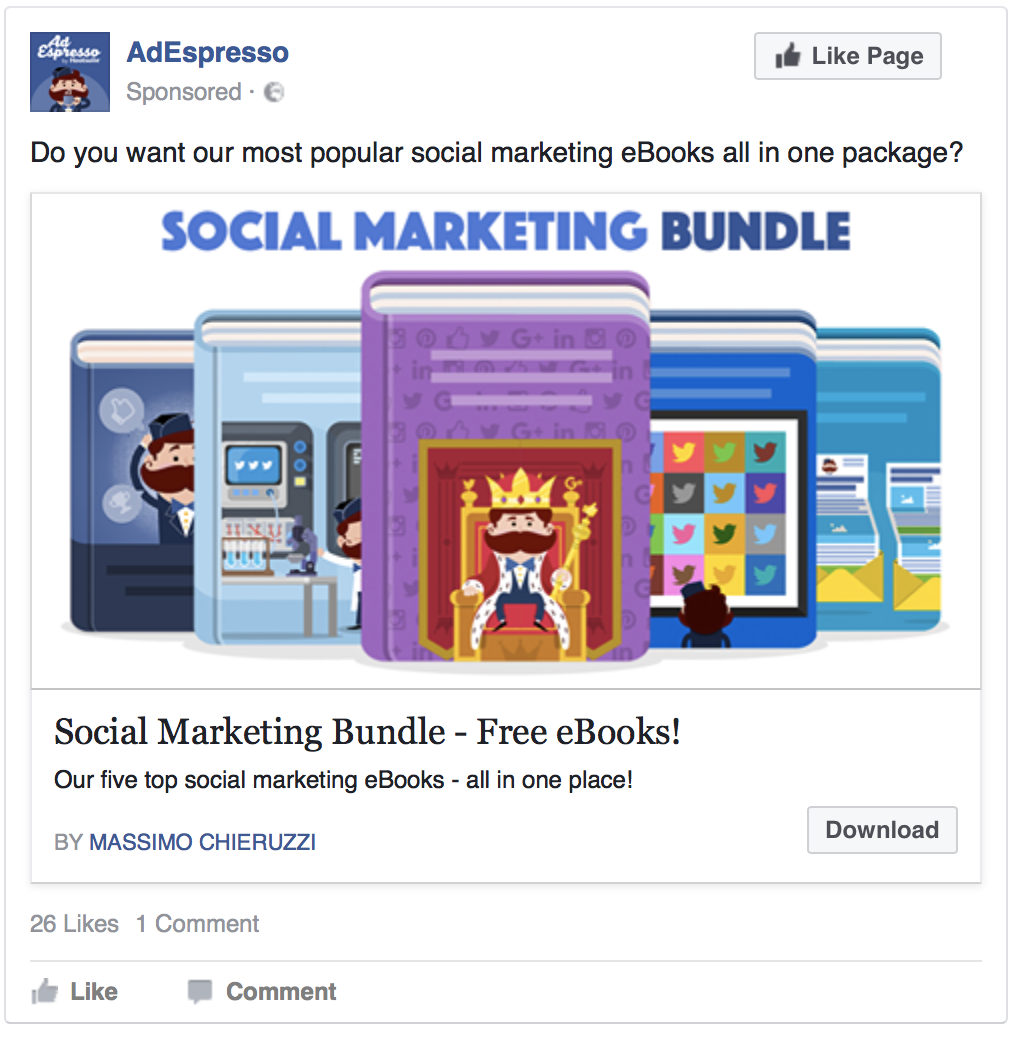
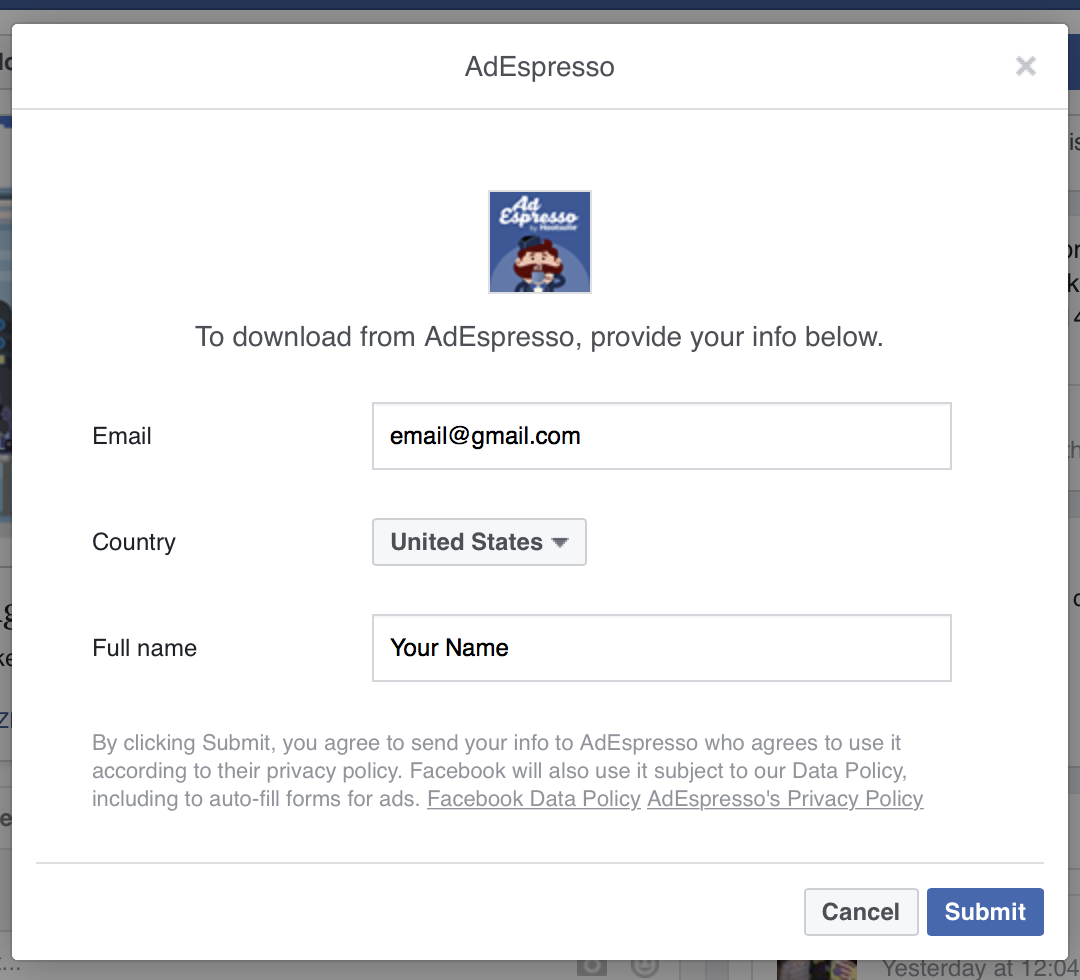
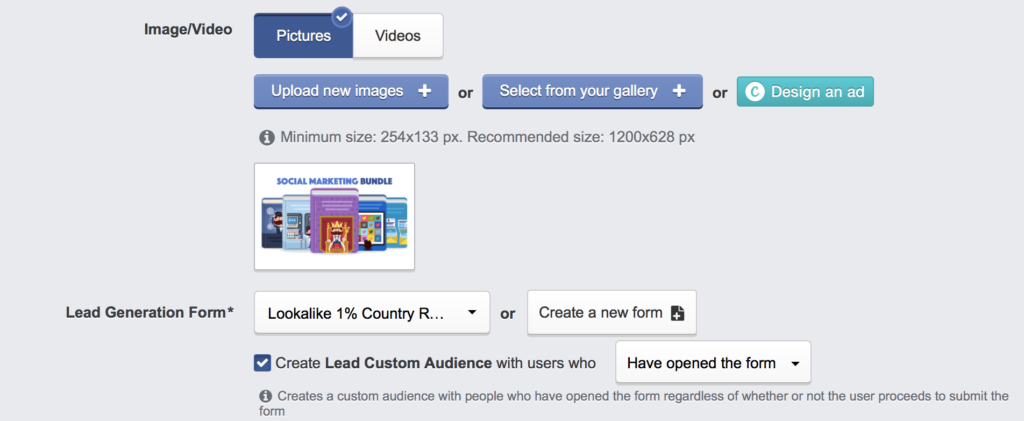



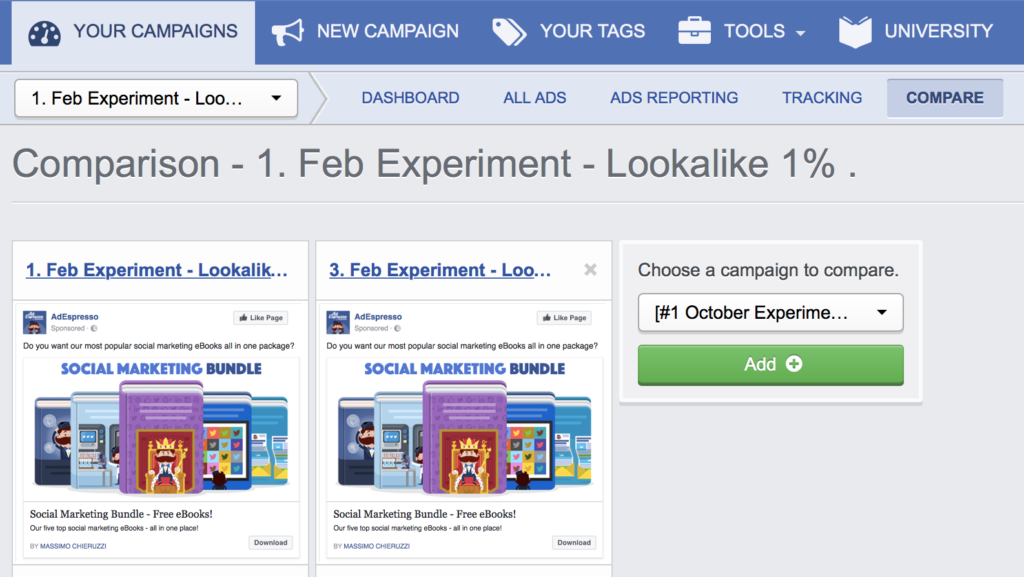
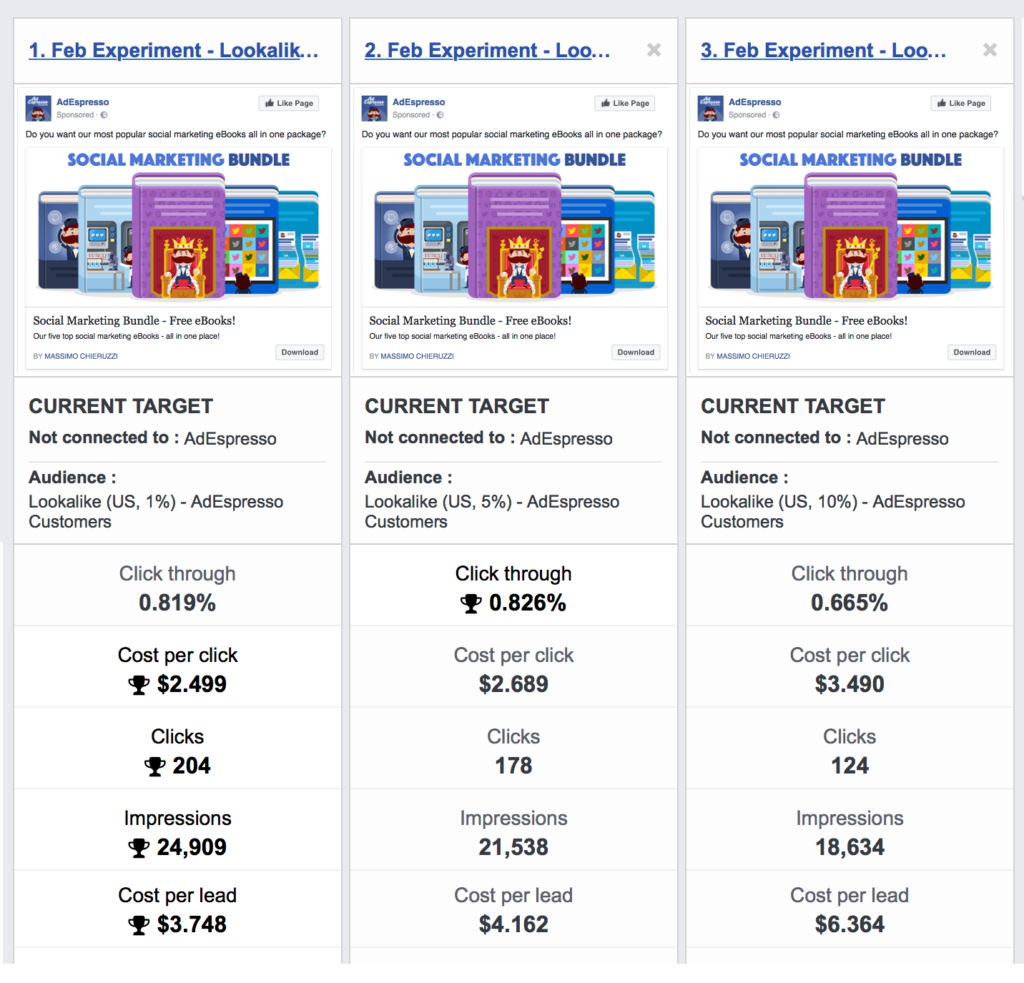


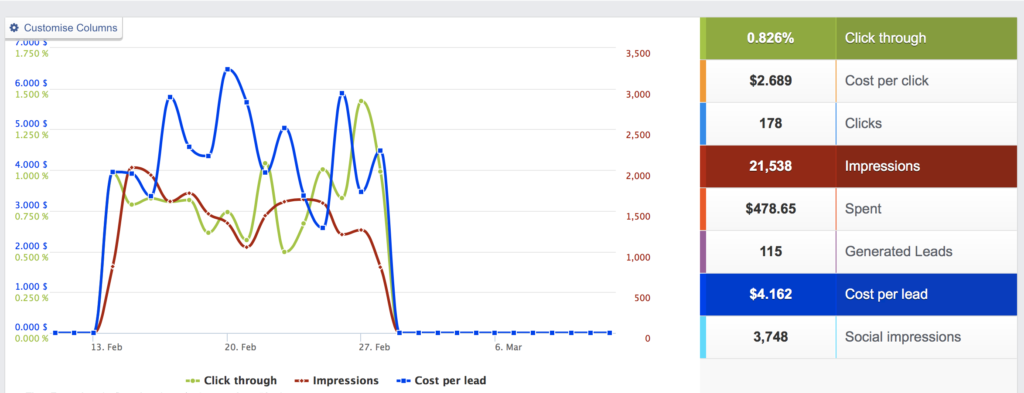
Hi guys. Read with great interest about your $1500 lookalike test. Curious to know if you guys negated the 1% lookalike audience in your 5% and 10% audiences?
Thx Jerry!
Glad you found it useful!
Yes, we excluded the other lookalike audiences from every ad campaign.
What was the source list for creating look alikes from? A house list (email addresses) or defined based on engagement
Hi, Thank you for the share of the result.
It makes sense regarding to the Cost Per Lead and also the CTR, but what about the amount of leads?
all the three adsets gain the same number?
Hi Yishai,
The Lookalike 1% audience delivered 115 leads and the others less. If you compare the cost-per-lead across all the three ad sets and the fact that each of them had a $500 budget, this was to be expected.
Let me know if you have any other questions! 🙌
Was this purely a lookalike or did you use interest and behaviour targeting at the ad set level?
Thanks, good question!
We didn’t use interest and behaviour targeting as we didn’t want to mix up the results.
However, that’s a great tactic for narrowing down large Lookalike audiences.
I enjoyed reading this article. Thank you
Thank you Patrick! 😌💎🎈
How did the customer download your PDF via the Facebook Lead form?
Hey Todd.
Once a person had entered their contact details and submitted the lead form, they were conducted to a landing page when they could download the eBook bundle.
http://prntscr.com/fejjjj
Hi, I have a question about this Takeaway: It makes sense to create smaller Facebook Lookalike Audiences as they deliver higher campaign ROI.
If you run a test with 3 small facebook lookalike aud., do you think there’s a chance to compete with themselves?
Thanx in Advance
simona
Hi Simona,
We excluded the 1% and 5% lookalike audiences from the 10% lookalike audience when setting up the experiment.
This way, we were able to avoid the audience overlap.
Hope this answers your question! 🙂
Awesome experiment guys!
What we have done as well is, instead of doing 1%, 5% and 10%, create several adgroups like this:
Lookalikes from 0-2%
Lookalikes from 2-4%
Lookalikes from 4-6%
Lookalikes from 6-8%
Lookalikes from 8-10%.
Then you have 5 lookalike audiences with the exact same amount of people, and we have found that the Cost per Lead stay the same on average between adgroups.
Would be interesting if you test it as well!
That’s a fascinating idea Felix!
We’ll look into it 😉
What about the number of leads per lookalike audience?
Often it’s just as good, if not better to have a lower ROI but more lead/sale volume for higher revenue.
The Lookalike 1% audience delivered 115 leads and the others less.
However, it can be said that had we used even larger budgets, all the audiences would have delivered a greater number of leads.
Awesome job guys, I’ve always heard to keep it around 1-2% from other digital marketers, but great to see the raw numbers.
One question, how big was your LaL audience?
Hey Andrew,
The 10% lookalike audience was over 6 million people. The 1% lookalike targeted around 2 million people.
Let us know if you have any further questions!
This is a bit shocking to me!
Why would we ever pick higher numbers then? Can you give me an example of when 10% would be the best choice?
Hi Romario,
As you advertise to 1% lookalike audiences for a while, this audience gets “exhausted” – you’ve reached its full potential. That’s when you need to expand to larger lookalike audiences.
Moreover, we wanted to see how well Facebook’s auto-optimization works – maybe a larger audience gives better options for optimization.
Interesting but not totally unexpected results given the relatively short time frame the campaigns ran for. I would be interested to see how this changed over 2+ months of activity. I would expect as the lookalike 5% & 10% audiences gained more data for optimisation they would be able to compete on CPL with the 1% despite a lower CTR. The biggest issue a lot of advertisiers have with a 1% lookalike is scale and it has begun to be widely accepted that larger audiences will provide cheaper and more scalable results due to FB’s optimisation algorithm having more conversions to use to optimise, especially for ongoing website conversion/app installs campaigns. Any thoughts on this and the possible limitations of the experiment? I would be very interested to know your thoughts!
That is an excellent idea – we normally just do monthly experiments, but perhaps a quarterly one which tests this Facebook’s optimization would be *very* interesting to see. Frequency tends to bottom out the results of optimization – but with just shy of 30M people, that gives Facebook a lot of runway.
Hi Karola,
I read your article with high interest and excitement. I am a bit of an outside the box thinker and have this to say about the results pertaining to the desktop computers versus mobile devices.
When reading these articles I try to change my thinking hats and see to it that marketing is a foreign language to me. This is what I realized after viewing the data:
Ok, mobile out-performed the click-through rates against desktops. That would be expected if we take into consideration the screen real-estate available to the ad and how well your ad got a prime spot against the other elements on the screen as apposed to a desktop display. That would also explain why forms work when displayed left to right covering the width of the article.
This would also hold true and explain that forms are more aesthetically pleasing to the eye and user engagement increases as a result especially on mobile devices. My experience comes from a background in web-design and pages with forms are displayed much more clearly when the page is viewed upright on mobile devices.
Cheers.
Thx Oz for weighing in your opinion!
Will keep in mind to test mobile placements even further in the future. 🙌
Aren’t you greatly overstating your CTR? “While the 1% and the 5% Lookalike Audiences had a CTR of 8.2%, the 10% Lookalike Audience delivered a CTR of 6.5%.”
Your actual click throughs appear to be under 1% (.82%, and .65%, respectively).
Hey there, this was a typo by us (it slipped by me too) – the image is CORRECT as you noted. Thanks for catching that, and we are now gonna fix it. – Tim
This is quite a good read. I didn’t know that there are costs for these ads and this facebook lookalike audience. So we should target 1% of the people that can be potential buyers.
This is extremely interesting. Could it be done without the $35/day per program? i.e. tapering off throughout the campaign? Or did you leave them all on for 14 days for full potential?
Hey CNS!
Could it be done without the $35/day per program? – Of course, you can also advertise with smaller budgets. However, if you’re A/B testing a Facebook ad campaign element, you’ll need to collect a sufficient amount of results for your conclusions to be statistically valid. 😉
We leaved the campaigns on for 14 days each.
Hi guys.
Did you test results also compared to the original custom audience? I’m interested to know the cost per lead from the original audience.
Thanks.
Great blog! I think one thing that was left out of the conclusion is the fact that you have a $35 daily budget for each campaign. I’ve been playing around with lookalike audiences myself. The daily budget is a major CPC factor. If your daily budget is maybe like $400, the CPC for the 1% will probably perform worse than the 5%.
Hello everyone. I am new user of this forum :). I am from Hungary and my language is poor :). Thanks
You have shared some interesting insights into Facebook advertising with your campaign experiments. Thanks so much for this article.
Hi do you have more info on excluding Custom Audiences of people who have already converted!